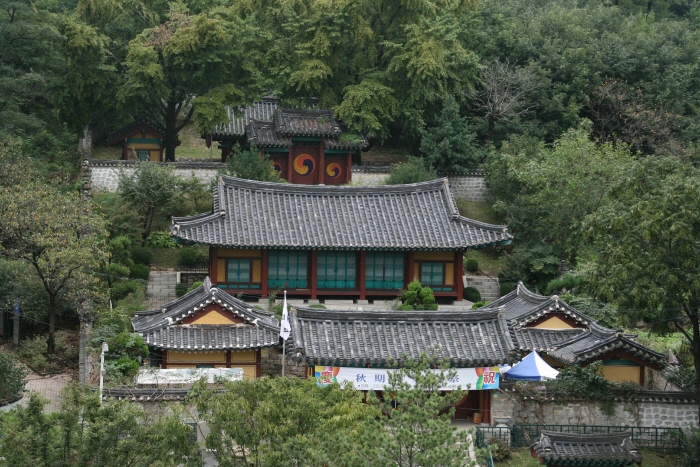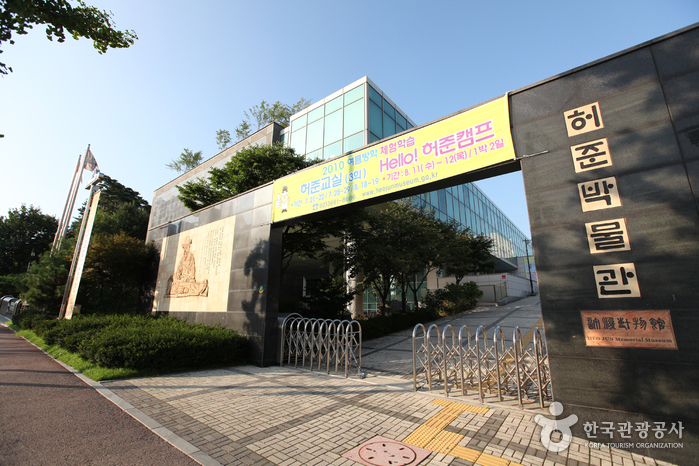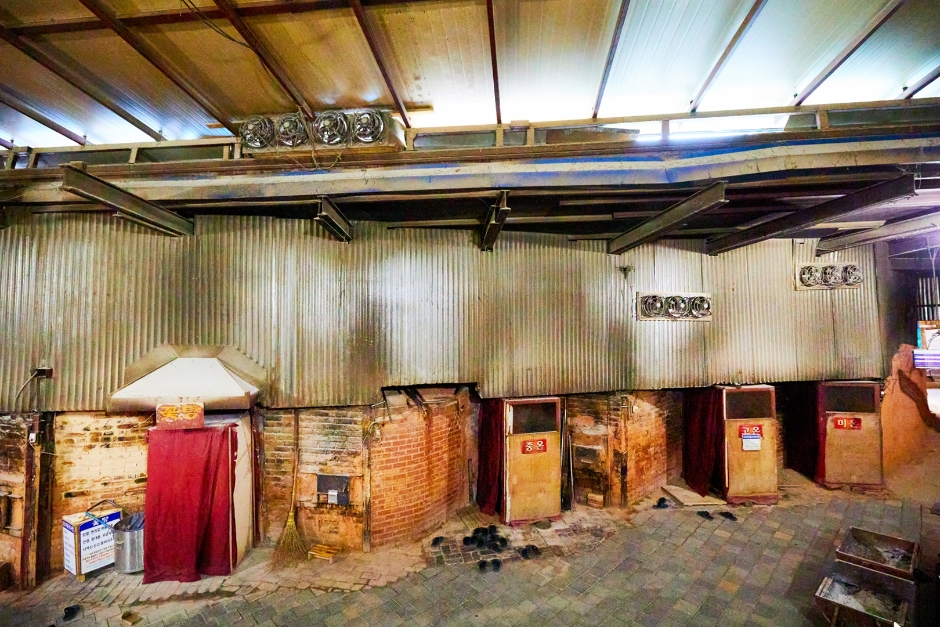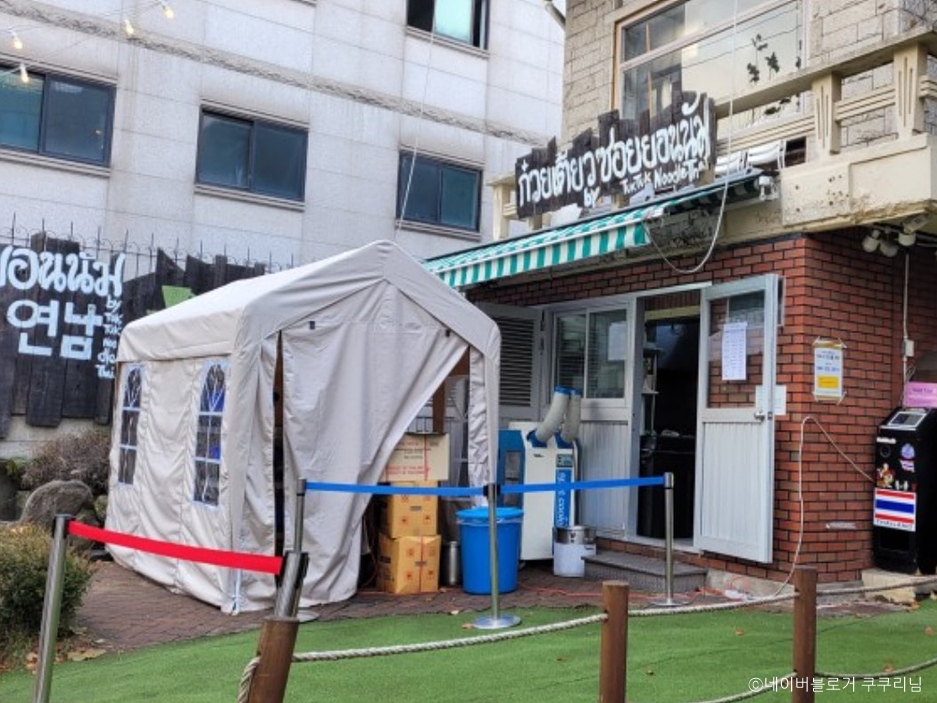Seodaemun Independence Park (서대문독립공원)
9.5Km 2022-12-15
251, Tongil-ro, Seodaemun-gu, Seoul
+82-2-3140-8305
Seodaemun Independence Park was built on the former Seoul Detention Camp. It was used to imprison thousands of Korean independence activists until the liberation from the Japanese occupation on August 15, 1945, as well as the political prisoners during the political turmoil in the 1960s. When the prison was moved to Uiwang-si, Gyeonggi-do in November 1987, the area was restored and turned into a memorial park in August 15, 1992 to honor the sacrifices of the martyrs. The park preserves seven prison buildings, an execution ground, underground women’s prison, and the March 1st Movement Monument that has been moved from Tapgol Park in Jongno.
One of the most significant monuments of the Seodaemun Independence Park is Dongnimmun Gate (Independence Gate), which has been designated a Historic Site. Nearby is Dongnipgwan (Independence Hall), originally called Mohwagwan, which was used to greet Chinese envoys during the Joseon dynasty. Today, the hall enshrines 2,327 tablets inscribed with the names of Koreans who died for the cause of national independence. Standing right next to Dongnimmun Gate are the remnants of Yeongeunmun Gate, another Historic Site. Other sights inside the park include the Patriotic Martyr Monument, Declaration of Independence Monument, and Statue of Dr. Seo Jae-pil, who was an independence activist and publisher of Korea’s first independent newspaper. The main highlight of the park is the Seodaemun Prison History Hall, a former prison building that was renovated into a history museum.
Yangju Olleung Royal Tomb [UNESCO World Heritage] (양주 온릉(단경왕후) [유네스코 세계문화유산])
9.5Km 2025-01-07
255-41, Hoguk-ro, Yangju-si, Gyeonggi-do
+82-31-855-5228
Olleung Royal Tomb is the royal tomb of Queen Dangyeong (1487-1557), consort of King Jungjong, the 11th ruler of the Joseon dynasty. Queen Dangyeong married King Jungjong when she was 13 years old. In 1506, when King Jungjong ascended to the throne, she became a queen as well, but she was deposed due to her father leading a coup against her husband's acendancy. Therefore, her grave was not regarded as a royal tomb until 1739.
Yangcheonhyanggyo Local Confucian School (양천향교)
9.6Km 2021-01-06
53, Yangcheon-ro 47na-gil, Gangseo-gu, Seoul
+82-2-2659-0076
Yangcheonhyanggyo Local Confucian School is the only educational institution of the Joseon dynasty remaining in Seoul, and as such was designated Seoul Monument No. 8. Built in the 12th year of Joseon King Taejong (1411), the old school was entirely restored in 1981. There are eight buildings in the premises, including Daeseongjeon Hall, Myeongnyundang Lecture Hall, and Jeonsacheong Hall to name a few. A national ritual service for Confucius is held here twice a year: once in spring and once in fall. Also, various programs are offered to teach Chinese characters, calligraphy, or Oriental painting to regular citizens, as well as elementary, junior, and high school students.
Shinman Co.,Ltd[Korea Quality]/주식회사 신만 [한국관광 품질인증]
9.6Km 2024-08-27
83 Bangullae-ro, Mapo-gu, Seoul
+82-2-373-8880
Shinman Co.,Ltd is a red ginseng store in Mangwon-Dong, Seoul. The store sells fresh, steamed and dried red ginseng; fresh ginseng lightly boiled in water; dried Taegeuk ginseng; and processed red ginseng products. It’s open 24/7 and staff speak foreign languages including English, Chinese, Malay, and Cantonese.
Olive Young - Yeonhui Branch [Tax Refund Shop] (올리브영 연희)
9.6Km 2024-04-22
79, Yeonhui-ro, Seodaemun-gu, Seoul
-
Heojun Museum (허준박물관)
9.6Km 2021-08-13
87, Heojun-ro, Gangseo-gu, Seoul
+82-2-3661-8686
The Heojun Museum opened in honor of the academic accomplishments and charitable deeds of the renowned medical scientist, Heojun of the Joseon dynasty. Located next to Heojun Neighborhood Park, the museum collects and displays Heojun related materials.
Seonungak (한옥카페 선운각)
9.6Km 2025-10-29
223 Samyang-ro 173-gil, Gangbuk-gu, Seoul
Seonungak is a hanok cafe facing Doseonsa Temple at the foot of Bukhansan Mountain, the perfect location to take in the beauty of the changing seasons. The cafe is also the largest hanok building outside of the royal palaces in Seoul. Previously limited to weddings and filming events, the hanok has reopened as a cafe, selling a range of traditional Korean drinks.
Supsok Hanbang Land (숲속한방랜드)
9.6Km 2024-03-18
75-7 Bongwonsa-gil, Seodaemun-gu, Seoul
Jjimjjilbang, a Korean-style sauna that combines a traditional bathhouse with a hot steam room, is often ranked high among the unique experiences in Korea chosen by foreigners. Taking a steam bath in a charcoal kiln discharges waste products from the skin through sweat and eliminates accumulated fatigue. Supsok Hanbang Land has several charcoal kilns for different temperatures. Using them in order from low to high-temperature rooms is good, but the highest-temperature room, “Kkottang,” has a risk of causing skinburn, so visitors are advised to wear socks and cotton gloves to enter the room. Another unique experience is to grill sweet potatoes or rice cakes on the brazier in front of the charcoal kiln.
Soi Yeonnam (소이연남)
9.7Km 2024-02-22
1F, 267 Donggyo-ro, Mapo-gu, Seoul
Soi Yeonnam is a rice noodle specialty restaurant where you can experience the atmosphere of Thailand. The signature dish is the flavorful and rich sogogi ssalguksu (beef noodle soup). Other popular dishes include soi popia (spring roll), which is fried with shrimp, pork, mushrooms, tom yam ssalguksu (tom yum noodle), and som tam (green papaya salad). It's so famous that people line up to eat there, and it's beloved by both locals and tourists alike.

![Yangju Olleung Royal Tomb [UNESCO World Heritage] (양주 온릉(단경왕후) [유네스코 세계문화유산])](http://tong.visitkorea.or.kr/cms/resource/10/757410_image2_1.jpg)





 English
English
 한국어
한국어 日本語
日本語 中文(简体)
中文(简体) Deutsch
Deutsch Français
Français Español
Español Русский
Русский